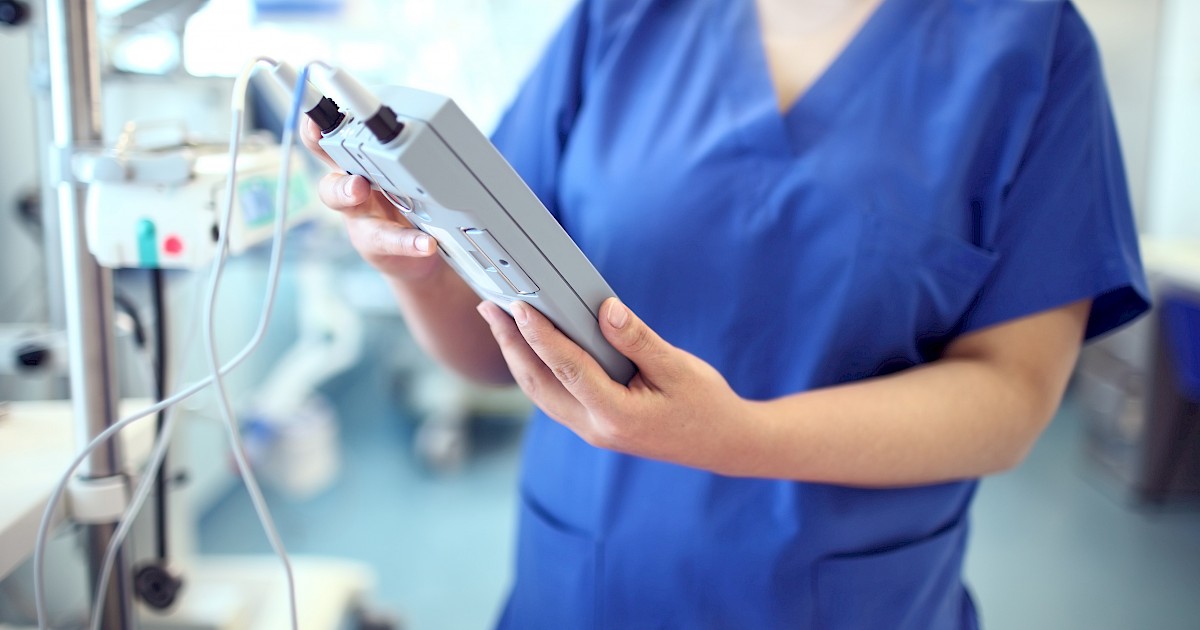Repair or Replace Biomedical Equipment? There’s No One-Size-Fits-All Answer

Most asset managers would agree that strategic planning and unexpected device failures often boil down to a decision between repairing or replacing biomedical equipment.
Purchasers typically rely on asset management tools and the advice of maintenance partners and vendors to help make such decisions. Although valuable, the input from these sources may not provide an inside perspective of the specific requirements of the hospital or health system.
Every healthcare facility has unique needs regarding biomedical equipment. Drilling down into the many factors involved in the choice to repair or replace biomedical equipment provides a more holistic perspective on the elements that contribute to the longevity and cost of specific device lifecycles.
Make Sure You’re Asking the Right Questions
Closely examining the facility’s asset landscape means knowing which questions will yield the most relevant information. Asset planning should involve conversations across health system departments, including clinical, biomedical, information systems, engineering, finance, risk management, and quality.
The same considerations apply to unexpected biomedical equipment downtime. Carefully customizing the organization’s repair-or-replace priorities during capital planning streamlines the process for device decisions that need to be made quickly.
Prioritizing patient safety
Patient safety drives every medical device decision, especially the choice to repair or replace mission-critical equipment, such as an infusion system or telemetry monitor. Risk management protocols differ between healthcare organizations, and every individual device has its own history. Purchasers can obtain local, device-specific data and balance it against their organization’s risk management requirements to identify safety concerns.
Reviewing all work orders for an individual device helps determine its overall reliability. Talking to the biomedical technicians who regularly perform infusion pump and troubleshoot telemetry systems can provide valuable details regarding recurring work orders.
Note that implementing new equipment can also increase risk. Evaluating internal reports regarding quality and safety events where new biomedical equipment has been installed provides insight into how new devices may affect care quality. Integrating biomedical acquisitions may require additional staff training or additional capital spend for full technology integration.
Purchasers may also wish to search for the device model in the following databases:
- FDA recall database--take note of which components were included in the recall so you can determine if repair with quality replacement parts is a safe option
- Manufacturer and user facility device experience (MAUDE) database--multiple reports of equipment failure submitted to the FDA are significant even if they didn’t result in a device recall
- ICS-CERT advisories--alerts regarding devices the U.S. government has flagged as particularly vulnerable to cyber attacks
Cyberattacks can directly impact patient safety, especially when they involve medication delivery and patient monitoring. The ECRI Institute has included cyberattacks in its annual executive brief, Top 10 Health Technology Hazards for 2021.
Calculating the cost to repair vs. replace
After evaluating device safety, the spotlight falls on the comparison between the cost of repair vs. replacement. Calculating the total price of equipment ownership is a complex process.
The first step is to identify large and small expenses that contribute to total capital investment. Changes in payer reimbursement schedules and fluctuations in vendor pricing can have a pronounced impact on total cost over the device lifespan. Utilization patterns, clinical staff protocols, and other facility-specific issues should also be included in cost analysis.
Some essential costs to consider include:
- Initial purchase price
- Routine maintenance
- Unplanned service and repairs
- Cost of OEM vs. 3rd party replacement parts
- Software upgrades
- Disposable supplies, such as cords, batteries, or single-use accessories
- Training hours
- Power supply costs
- Network and data management costs
OEMs continually develop more advanced biomedical technology to enhance clinical outcomes. Some brands provide frequent upgrades for existing equipment lines; others retire certain models and discontinue replacement parts so their cutting-edge solutions can reach more patients and clinicians. The cost and turnaround time of OEM service and repair after the warranty period has ended may increase the total cost of device ownership.
Making the Final Call
Once a reasonable capital value has been assigned to a device, it’s time to compare that figure with the cost of replacing the machine. This comparison puts other concerns, especially regarding safety, into perspective.
When all information has been reviewed, purchasers must make the best decision for their organization--and, most importantly, their patients.
When to repair
Repairs make sense when they’re affordable, increase device lifespan without sacrificing quality, and support high-value care and positive patient outcomes. “You can replace components on the device to bring it up to OEM standards to keep it in your fleet longer,” says Brenda Compliment, Director of Quality at Elite Biomedical Solutions. Based on typical telemetry and infusion pump repairs, Elite’s partners save around 30% on total costs over a 10-year period.
To safely lower repair costs, it’s essential to use a 3rd party manufacturer who demonstrates robust quality control management. Using lower-quality parts for infusion pumps or telemetry repair can lead to higher long-term costs because cheaper parts fail more often. They can also considerably increase the risk of an adverse patient event due to device failure, including the loss of life.
When to replace
“If a device is so badly damaged that you’re replacing every single part, then your basically building a whole new device,” Compliment explains. “At about 70-80% of the cost for a new unit, you would want to replace it.” She also notes that cybersecurity software upgrades aren’t available for some older devices. For equipment that can’t be upgraded to the current FDA cybersecurity requirements, replacing the device is the only option.
Elite Biomedical Solutions manufactures OEM quality or higher replacement parts in the USA. Contact us to discover how Elite’s outstanding parts and repair services can extend the life of several device brands, including GE telemetry monitors and BD infusion pumps.

